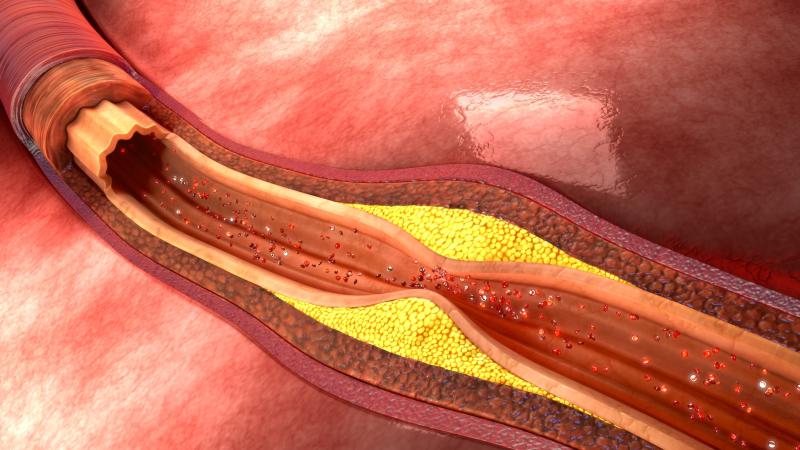
Epicardial fat volume (EFV) appears to coincide with greater coronary artery calcification (CAC) and obstructive coronary artery disease (CAD) in patients with symptoms of cardiovascular disease, a new study has found.
The study included 1,344 patients, of whom 63.1 percent (n=848) had no CAD, while 24.3 percent (n=326) had nonobstructive CAD. The remaining 170 (12.6 percent) had obstructive CAD. Mean CAC was 56.5 and was absent in 28.3 percent (n=380). The median EFV was 90.52 mL.
Median CAC was lower in those without CAD, as opposed to either group with CAD. In turn, patients with obstructive vs nonobstructive CAD showed higher median CAC values (15 vs 113.5 vs 427). Both pairwise comparisons were statistically significant (p<0.001 for both).
Similarly, median EFV was reduced in participants who had no CAD, as opposed to those with nonobstructive and obstructive CAD (87.21 vs 93.89 and 102.98 mL; p<0.001). The difference in EFV between the two CAD subgroups failed to reach significance.
However, full logistic regression models showed that EFV was inconsistently predictive of either nonobstructive (B, 1.002, 95 percent confidence interval [CI], 0.999–1.005; p=0.204) or obstructive (B, 1.002, 95 percent CI, 0.998–1.006; p=0.325) CAD.
CAC, on the other hand, reliably differentiated obstructive from nonobstructive CAD (B, 1.00, 95 percent CI, 0.999–1.000; p<0.001) and from no CAD (B, 1.000, 95 percent CI, 0.998–1.006; p<0.001). However, CAC had limited value in discriminating no CAD from nonobstructive CAD (B, 1.000, 95 percent CI, 1.000–1.000; p=0.869).
“CAC is a predictor of CAD presence and severity, while EFV did not predict the burden of CAD,” researchers said.